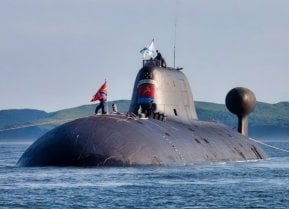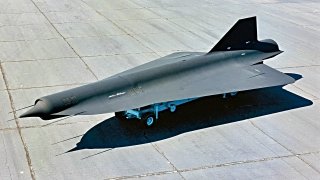China's New 'Mach 6' Drone Could Be a Copycat of America's D-21 (That Spied on China)
China's WZ-8 drone, reminiscent of the American D-21, was revealed in 2019 as a sophisticated UAV capable of Mach 3.0 speeds and operating at altitudes up to 100,000 feet.
Summary: China's WZ-8 drone, reminiscent of the American D-21, was revealed in 2019 as a sophisticated UAV capable of Mach 3.0 speeds and operating at altitudes up to 100,000 feet.
-Designed for strategic reconnaissance in southeast Asia, the WZ-8 could target U.S. military bases in the Pacific as an anti-access weapon. Recent images suggest the drone is being tested with the H-6 bomber, enhancing China's aerial surveillance capabilities.
-The WZ-8's development underscores China's intent to advance its military technology, possibly deploying it alongside the H-6 for improved regional oversight and as a countermeasure against U.S. forces.
WZ-8: China's D-21 Drone Copy?
China appears to be pairing its copy-cat version of the D-21 drone with the H-6 bomber. According to images released over the weekend, the outline of extra delta wings flying beside the silhouette of an H-6 Xi’an jet bomber circulated on social media.
While the exact details of the image remain unclear, some analysts assert that this confirms a long-held assessment that the Chinese WZ-8 supersonic unmanned aerial vehicle (UAV) is being tested to fly alongside the bomber in future operations.
Introducing the WZ-8 drone
The WZ-8 high-speed drone was initially debuted in 2019 at China’s annual National Day military parade.
Produced by Aviation Industry Corporation of China, the UAV is intended to carry out strategic aerial reconnaissance across southeast Asia.
This drone is far more sophisticated than its counterparts in China’s possession.
Capable of reaching a top speed of Mach 3.0 (times the speed of sound) and an altitude of 100,000 feet, the WZ-8 is theoretically able to evade interception from air defense systems.
With these specs in mind, the Chinese drone could not only be used against Taiwan in the future, but also U.S. military bases and assets in the Pacific as an anti-access/area denial weapon.
A D-21 copycat?
Notably, the WZ-8 looks very similar to the American-made D-21 UAV that crashed in China during the Cold War.
The Lockheed Martin-designed drone was developed initially for the Central Intelligence Service (CIA) and the Air Force’s surveillance missions over hostile regions. This supersonic reconnaissance UAV could be launched from the back of an M-21 carrier spy plane.
Later, the aerial system was modified to be able to launch from a Boeing B-52 Stratofortress. The D-21 was designed to make a one-way trip to a target, capture imagery, and then eject its camera at the end of mission for recovery before self-destructing.
The drone was powered by a Maquartdt RJ43-MA-20S4 ramjet engine that was capable of producing 11,500 pounds of thrust and a top speed of Mach 3.3.
Between 1969 and 1971, the U.S. launched four operation missions using the D-21 drone under the moniker “Senior Bowl.” Each tie, the drone flew over the Lope Nor nuclear test site in the People’s Republic of China.
None of the attempts were deemed successful, and the final flight in March 1971 resulted in the crashing of the D-21 over China. Local authorities discovered the fallen drone near the Yunnan province.
How Beijing could deploy the WZ-8:
When China revealed its WZ-8 UAV in 2019, analysts immediately recognized the drone as a D-21 copy. In addition to its exterior appearance, the Chinese drone also appears to have to be launched by a mothership during flight- likely the H-6 strategic bomber.
While Beijing claims that this UAV can reach speeds as fast as Mach 6, the exact specs and capabilities of the WZ-8 remain a mystery. Once operational, the WZ-8, alongside the H-6, will represent China’s attempt to better survey the skies.
About the Author: Maya Carlin
Maya Carlin, National Security Writer with The National Interest, is an analyst with the Center for Security Policy and a former Anna Sobol Levy Fellow at IDC Herzliya in Israel. She has by-lines in many publications, including The National Interest, Jerusalem Post, and Times of Israel. You can follow her on Twitter: @MayaCarlin.


